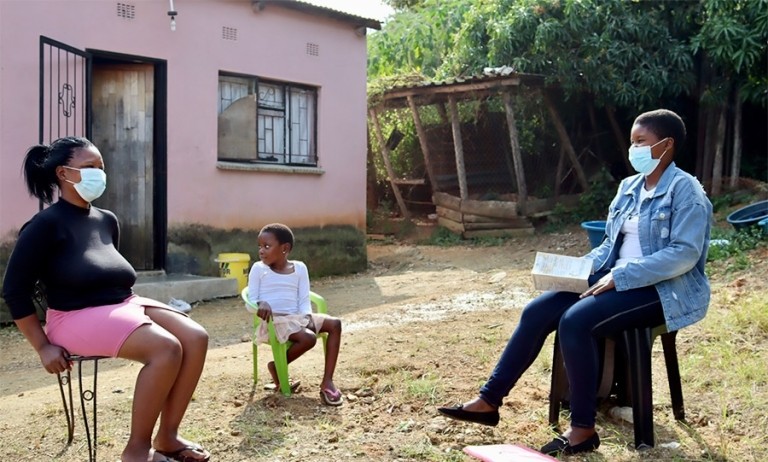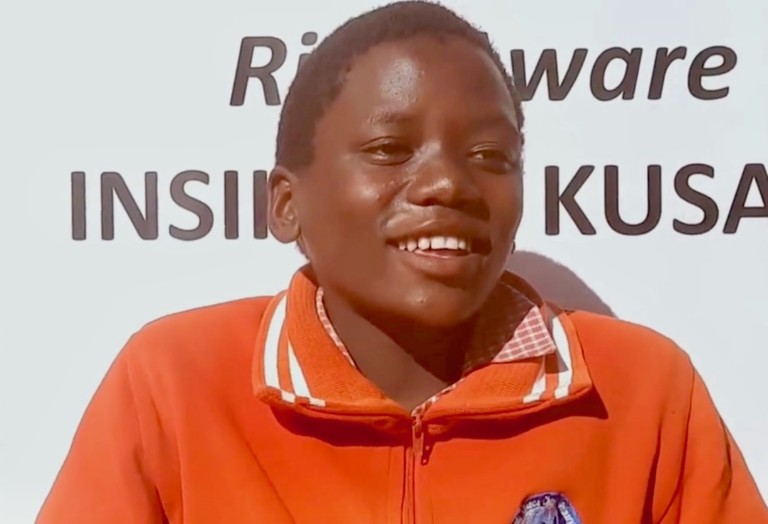Blog
In Eswatini, here’s how we’re reaching more than 6,000 children with HIV treatment

Eswatini has a population of slightly more than a million people yet has one of the highest HIV prevalence rates in the world. That's why it is even more impressive that Eswatini was one of only two countries to achieve the ambitious 95-95-95 fast track targets in 2020 and is swiftly approaching sustained control of the epidemic. The Ready, Resourceful and Risk Award (Triple R) project, locally called Insika ya Kusasa, is closing this gap by providing child and adolescent friendly and supportive HIV services to more than 6,000 children living with HIV.
“The OVC program provides a holistic client-centered approach,” says Zwakele Dlamini, OVC Technical Lead for Pact in Eswatini.
“In collaboration with local health care facilities, we establish partnerships with children and their families to foster self-empowerment and personalized care while addressing economic, social, emotional and physiological barriers that hinder the access and retention to ART,” Dlamini continued. The program targets children and adolescents living with HIV (C/ALHIV) who may have interrupted treatment, are not diagnosed, or lack access to ART. It has achieved 95% adherence to ART for enrolled C/ALHIVs, 100% linkage to treatment for previous treatment interrupters and 93% viral suppression for all children enrolled on ART.
To identify children with HIV who aren't on treatment, Triple R works directly with health facilities. “Linkages assistants” work with health facility staff to identify C/ALHIV who have interrupted treatment and follow up with these children and their caregivers to link them back to care and provide them with tailored support, such as treatment adherence education and follow-up support; missed appointment and treatment interruption tracing; and tracking and supporting referral completion for viral load monitoring. The assistants work together with a multidisciplinary team to ensure that these C/ALHIV attend teen clubs and receive the full clinical package of care.
At the community level, home visitors provide home-based case management. They enhance the identification of C/ALHIV who are not on treatment and make referrals to the health facility assistants to ensure that that child is supported when they arrive. They provide treatment adherence support through education, messaging and monitoring; and develop the skills of caregivers to monitor and support ART adherence, clinic attendance and teen club participation. They also work closely with assistants to ensure that comprehensive home-based services are provided monthly. For C/ALHIV with high viral loads, they can receive non-conditional cash grant support.

Adolescent girls like Hlengiwe Mhlanga, 14, demonstrate the unique contribution made by Triple R to keep children in care and virally suppressed. After her mother’s death, Mhlanga has been living with HIV and epilepsy. "I was not in school for an entire year because I was neglected by my father,” she says. She could not reach her school or the health facility as the distance was too far and required her to cross rivers, a dangerous challenge with epilepsy.

After failed attempts to engage Mhlanga’s father, the case was referred to Insika’s gender-based violence response partner, the Swaziland Action Group Against Abuse (SWAGAA), who immediately visited the child’s home to conduct an assessment and validate the alleged abuse. “I received help and support and was even enrolled back in school through SWAGAA’s help,” says Mhlanga. The family decided to relocate her to stay with her aunt who lived much closer to the health facility and the school.
“Even the community embraces me, as does my aunt. I am able to walk and get my treatment. I hope that others will receive the same support services as I have and be able to present or speak about it,” Mhlanga says.
As treatment gaps close across the board, the unmet need for ART remains high among children and adolescents living with HIV compared to adults. There is still work to be done.